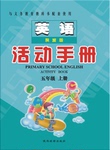题目内容
Scientists have noted that apes make characteristic sounds during play or while being tickled, especially to signal that they’re interested in playing. It’s been suggested before that human laughter grew out of primate(灵长类动物) roots. But ape laughter doesn’t sound like human laughter. It may be slower noisy breathing. So what does that have to do with the human ha-ha? To investigate that, Marina Davila Ross and her colleagues carried out a detailed analysis of the sounds made by tickling three human babies and 21 other primates, apes included.
After measuring 11 features in the sound from each species, they tried to find out how these sounds appeared to be related to each other. The result looked like a family tree. Significantly, that tree matched the way the species themselves are related, the scientists reported online in the journal Current Biology. They also concluded that while human laughter sounds much different from ape laughter, their typical features could have come from the same ancestor.
Panksepp, who studies laughter-like responses in animals but didn’t participate in the new work, called the paper exciting. Panksepp’s own work concludes that even rats produce laughter in response to playing and tickling, with sounds that can hardly be heard by people. Robert Provine, a scientist, who wrote the book, Laughter: A Scientific Investigation, said the new paper showed some important clues, like ape sounds that hadn’t been realized before.
- 1.
Why did the scientists analyze the laughter made by tickling human babies and apes?
- A.To try to discover if they can make characteristic sounds.
- B.To see if they interested in playing.
- C.To find out if the laughter of apes and humans is related.
- D.To find out the differences between humans and apes.
- A.
- 2.
Based on Paragraph 3 we can know that researchers measured the features in the sound to ________.
- A.find out ape sounds that hadn’t been realized before
- B.find out relations among primates’ laughter
- C.see what a family tree from each species looks like
- D.make a report online in the journal Current Biology
- A.
- 3.
What can be inferred from the last paragraph?
- A.Panksepp spoke highly of the new research.
- B.Rat laughter is likely to be related to ape laughter.
- C.Robert Provine provided some new clues for the researchers.
- D.Humans don’t enjoy listening to ape laughter.
- A.
- 4.
What would be the best title for the passage?
- A.Ape study explores evolution of laughter.
- B.Apes like to laugh when being tickled.
- C.Human laughter and ape laughter are different.
- D.Laughter: A Scientific Investigation.
- A.
CBAA

练习册系列答案
 互动课堂系列答案
互动课堂系列答案 激活思维智能训练课时导学练系列答案
激活思维智能训练课时导学练系列答案
相关题目